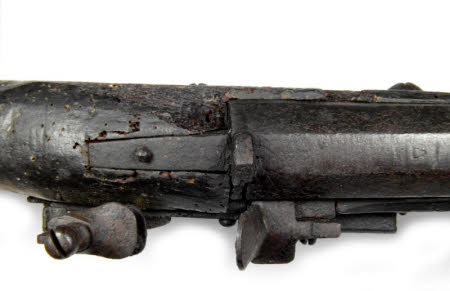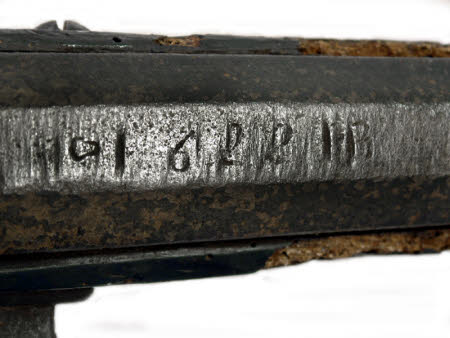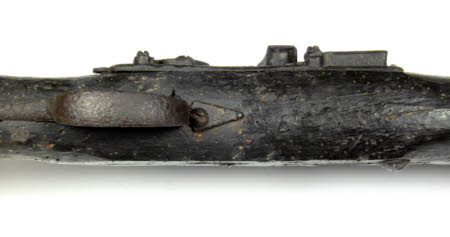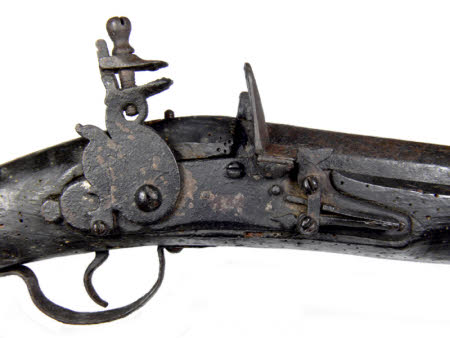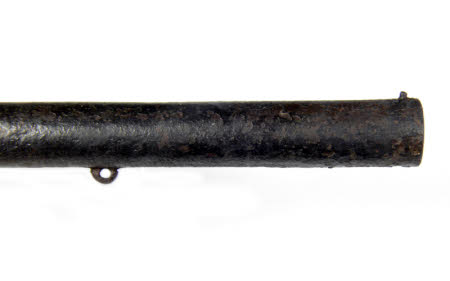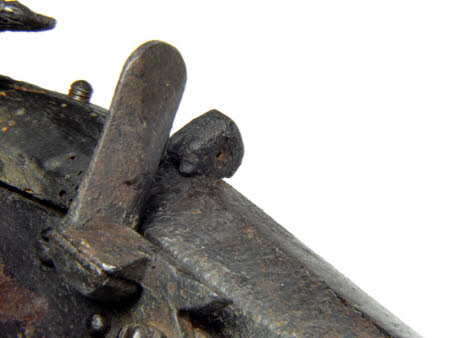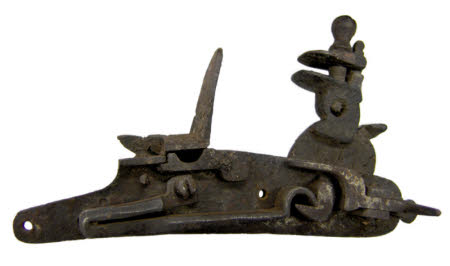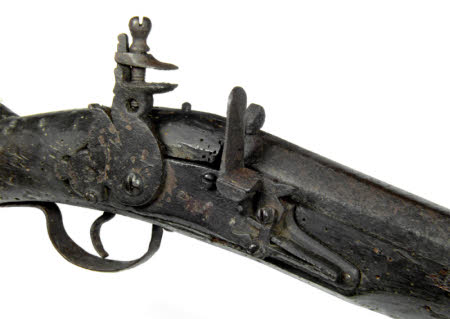Musket
Category
Arms and armour
Date
circa 1660 - circa 1670
Materials
Iron, Wood
Measurements
1640 x 70 x 250 mm
Order this imageCollection
Dunster Castle, Somerset
NT 725972.7
Summary
Rare English-Lock flintlock musket, English, c1660-70
Full description
A rare English Lock flintlock musket, English, c1660 –1670. Attached label reads : No 6 Flintlock, blacked wood, missing rod chamber. Section of painted woodworm at base of butt.( Marked as DC/MISC/5 but item with this number is wall mounted in the gun room.) Fitted with an earlier barrel, dated 1622, the breech with traces of a groove behind the touch hole indicating that it had once had a flash guard and had been used on a matchlock gun. Part of the 17th century Luttrell Armoury and described in the 1705 inventory as one of "43 Musquetts in Dunster Castle". It is thought that the Armoury was assembled in the 1670s by Francis Luttrell (1659 -1690) who formed a Militia and took part in repelling the invasion by James, Duke of Monmouth in 1685. Barrel: Iron barrel, formed in 2 stages, octagonal at the breech, then round to the muzzle, separated by a turned moulding. The muzzle with a bead fore-sight; the breech with a raised peep-hole rear sight. The breech stamped with an unidentified mark, together with the initials PB and the date 1622 (both worn). Retained to the stock by 3 barrel pins (missing). The ramrod is missing. Barrel length: 126.7cm Calibre: 20cm Stock: Wooden full stock with a chunky French-form butt of 2-piece construction, the forestock V-shaped forward of the lock area. A section of wood is missing near the muzzle. Iron furniture comprising; small ¾ size butt plate, bow-shaped trigger guard with spear-shaped finial, and 1 ramrod pipe. The curved trigger is suspended from a pin inserted above the rear section of the lock. Lock: English Lock flintlock (Type 2 with lateral sear) with flat plate, the lower edge curved and having a pronounced bevel, the tail of the plate with a button-shaped finial. Flat form cock with reinforced neck and retained with a central screw fixing. The cock with a V-shaped cut at the rear for the decoratively shaped dog-catch. There is a flat bridle between frizzen and spring. There is a decorative finial to the frizzen spring. Retained to the stock by 2 sidenails. Overall length of the musket: 164.2cm References Brian Godwin, “The Armoury at Dunster Castle”, 14th Park Lane Arms Fair catalogue, London 1997 Brian Godwin, “Dunster Castle – The Armoury Revisited”, London Park Lane Arms Fair catalogue, Spring 2008
Marks and inscriptions
Top of barrel: initials FL Each side of butt: initials FL
References
Godwin, 2003, Brian Godwin, “The English Flintlock: Its Origins and Development”, (with John Cooper & Michael Spencer) 20th Park Lane Arms Fair catalogue, London 2003.

